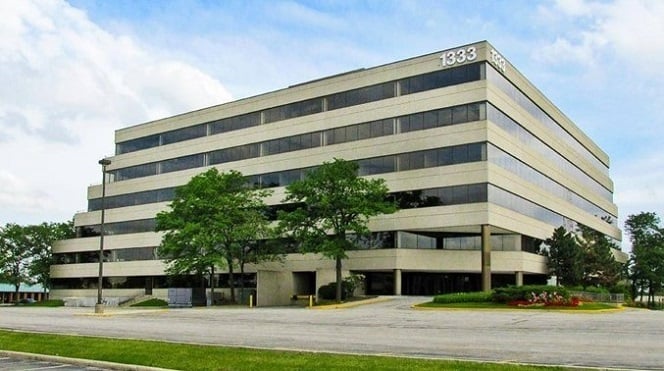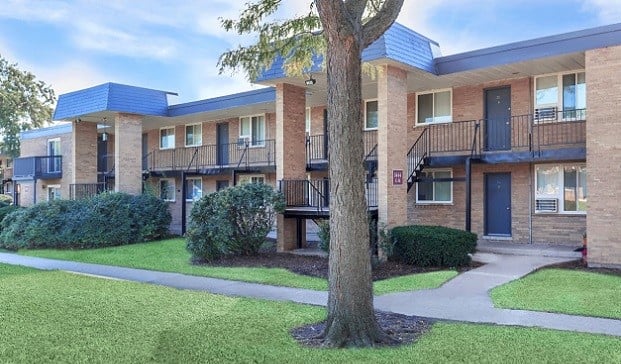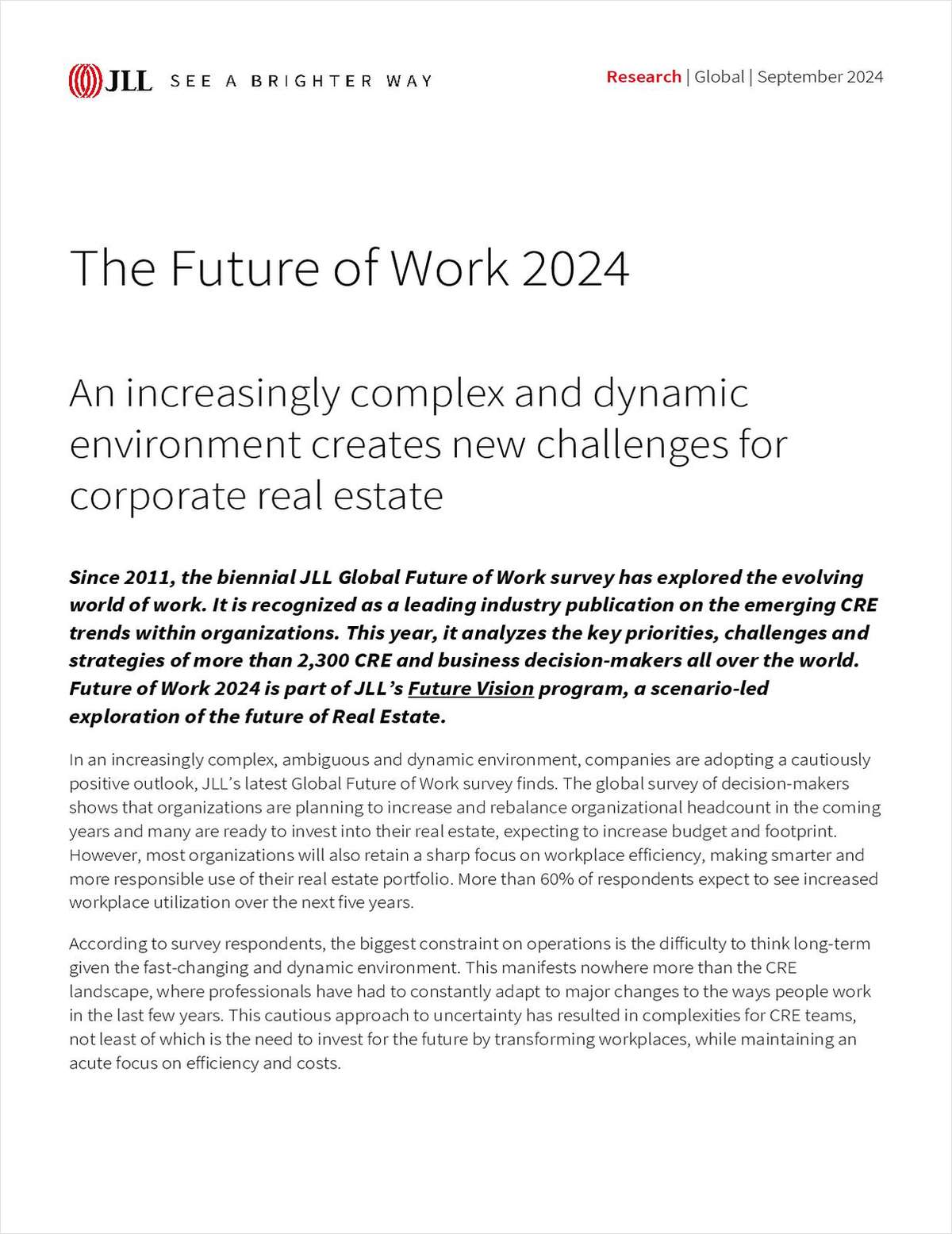 CHICAGO—The Chicago office market is on the verge of transformation. Starting in 2017, dozens of tenants will leave their present spaces and move into the trophy office towers nearing completion in the West Loop. That migration is helping to open up large amounts of shadow space throughout the CBD. And even if all this movement does not quite change downtown into a tenants' market, it could open up opportunities for tenants looking for premier space at a discount. “Whether it swings the pendulum back toward tenants is still to be determined,” Steve Steinmeyer , senior managing director, JLL , tells GlobeSt.com. Several developers have significant projects on the drawing board, including a mixed-use tower at 590 W. Madison that could add more than 600,000 square feet of office space to the market. And if developers start breaking ground on these new office buildings, that may give tenants a solid advantage. “The wild card here is what happens with the economy.” But even if those projects remain on drawing boards for a while, “that doesn't mean there aren't a lot of opportunities out there.” JLL has just put out some stats on the proliferation of shadow space in the CBD. 333 S. Wabash has the largest amount with 759,000 square feet, although it's not certain that will remain office space. Tishman Speyer's The Franklin at 222 W. Adams and 227 W. Monroe comes in second place with about 442,000 square feet. The latter is a good example of the impact of the West Loop's new office towers, says Steinmeyer. The two-building complex will soon lose McDermott Will & Emery to River Point at 444 W. Lake St., and William Blair & Co. plans to leave for about 300,000 square feet in 150 N. Riverside Plaza. All that new construction “is definitely a big factor,” Steinmeyer adds, but “it's not the only one.” At 300 S. Riverside, for example, which has about 252,000 square feet of shadow space, J.P. Morgan Chase recently decided to vacate its offices as part of a consolidation.
CHICAGO—The Chicago office market is on the verge of transformation. Starting in 2017, dozens of tenants will leave their present spaces and move into the trophy office towers nearing completion in the West Loop. That migration is helping to open up large amounts of shadow space throughout the CBD. And even if all this movement does not quite change downtown into a tenants' market, it could open up opportunities for tenants looking for premier space at a discount. “Whether it swings the pendulum back toward tenants is still to be determined,” Steve Steinmeyer , senior managing director, JLL , tells GlobeSt.com. Several developers have significant projects on the drawing board, including a mixed-use tower at 590 W. Madison that could add more than 600,000 square feet of office space to the market. And if developers start breaking ground on these new office buildings, that may give tenants a solid advantage. “The wild card here is what happens with the economy.” But even if those projects remain on drawing boards for a while, “that doesn't mean there aren't a lot of opportunities out there.” JLL has just put out some stats on the proliferation of shadow space in the CBD. 333 S. Wabash has the largest amount with 759,000 square feet, although it's not certain that will remain office space. Tishman Speyer's The Franklin at 222 W. Adams and 227 W. Monroe comes in second place with about 442,000 square feet. The latter is a good example of the impact of the West Loop's new office towers, says Steinmeyer. The two-building complex will soon lose McDermott Will & Emery to River Point at 444 W. Lake St., and William Blair & Co. plans to leave for about 300,000 square feet in 150 N. Riverside Plaza. All that new construction “is definitely a big factor,” Steinmeyer adds, but “it's not the only one.” At 300 S. Riverside, for example, which has about 252,000 square feet of shadow space, J.P. Morgan Chase recently decided to vacate its offices as part of a consolidation.  The CBD's current vacancy rate stands at 11%, according to JLL's report on the second quarter. It has hovered near that rate for several years, a sign of consistent demand, much of it driven by tech-related firms and the movement of suburban headquarters into the CBD. That means the city's landlords stand a good chance of filling in these shadow spaces. In the near future, Hailey Harrington , senior research analyst for JLL, says the downtown probably “won't be a tenant-favorable market, but more likely it will swing back toward neutral.” Still, the ability to fill these spaces varies from building to building. Both Harrington and Steinmeyer believe Tishman Speyer has an excellent chance to secure tenants for The Franklin, due to the host of amenities added to the property, which they consider a trophy office building. “It gives an opportunity for a tenant in a class B or A-minus building to trade up,” says Harrington, as long as they are willing to pay higher rent. Other owners with a lot of shadow space may not have done as much to upgrade their properties, but several of these buildings definitely qualify as class A and provide the amenities that many modern office users expect. “They are not going to attract the same tenants,” says Steinmeyer, but that just means that when it comes to occupying shadow space, “there is going to be something for everyone.”
The CBD's current vacancy rate stands at 11%, according to JLL's report on the second quarter. It has hovered near that rate for several years, a sign of consistent demand, much of it driven by tech-related firms and the movement of suburban headquarters into the CBD. That means the city's landlords stand a good chance of filling in these shadow spaces. In the near future, Hailey Harrington , senior research analyst for JLL, says the downtown probably “won't be a tenant-favorable market, but more likely it will swing back toward neutral.” Still, the ability to fill these spaces varies from building to building. Both Harrington and Steinmeyer believe Tishman Speyer has an excellent chance to secure tenants for The Franklin, due to the host of amenities added to the property, which they consider a trophy office building. “It gives an opportunity for a tenant in a class B or A-minus building to trade up,” says Harrington, as long as they are willing to pay higher rent. Other owners with a lot of shadow space may not have done as much to upgrade their properties, but several of these buildings definitely qualify as class A and provide the amenities that many modern office users expect. “They are not going to attract the same tenants,” says Steinmeyer, but that just means that when it comes to occupying shadow space, “there is going to be something for everyone.”  CHICAGO—The Chicago office market is on the verge of transformation. Starting in 2017, dozens of tenants will leave their present spaces and move into the trophy office towers nearing completion in the West Loop. That migration is helping to open up large amounts of shadow space throughout the CBD. And even if all this movement does not quite change downtown into a tenants' market, it could open up opportunities for tenants looking for premier space at a discount. “Whether it swings the pendulum back toward tenants is still to be determined,” Steve Steinmeyer , senior managing director, JLL , tells GlobeSt.com. Several developers have significant projects on the drawing board, including a mixed-use tower at 590 W. Madison that could add more than 600,000 square feet of office space to the market. And if developers start breaking ground on these new office buildings, that may give tenants a solid advantage. “The wild card here is what happens with the economy.” But even if those projects remain on drawing boards for a while, “that doesn't mean there aren't a lot of opportunities out there.” JLL has just put out some stats on the proliferation of shadow space in the CBD. 333 S. Wabash has the largest amount with 759,000 square feet, although it's not certain that will remain office space. Tishman Speyer's The Franklin at 222 W. Adams and 227 W. Monroe comes in second place with about 442,000 square feet. The latter is a good example of the impact of the West Loop's new office towers, says Steinmeyer. The two-building complex will soon lose
CHICAGO—The Chicago office market is on the verge of transformation. Starting in 2017, dozens of tenants will leave their present spaces and move into the trophy office towers nearing completion in the West Loop. That migration is helping to open up large amounts of shadow space throughout the CBD. And even if all this movement does not quite change downtown into a tenants' market, it could open up opportunities for tenants looking for premier space at a discount. “Whether it swings the pendulum back toward tenants is still to be determined,” Steve Steinmeyer , senior managing director, JLL , tells GlobeSt.com. Several developers have significant projects on the drawing board, including a mixed-use tower at 590 W. Madison that could add more than 600,000 square feet of office space to the market. And if developers start breaking ground on these new office buildings, that may give tenants a solid advantage. “The wild card here is what happens with the economy.” But even if those projects remain on drawing boards for a while, “that doesn't mean there aren't a lot of opportunities out there.” JLL has just put out some stats on the proliferation of shadow space in the CBD. 333 S. Wabash has the largest amount with 759,000 square feet, although it's not certain that will remain office space. Tishman Speyer's The Franklin at 222 W. Adams and 227 W. Monroe comes in second place with about 442,000 square feet. The latter is a good example of the impact of the West Loop's new office towers, says Steinmeyer. The two-building complex will soon lose  The CBD's current vacancy rate stands at 11%, according to JLL's report on the second quarter. It has hovered near that rate for several years, a sign of consistent demand, much of it driven by tech-related firms and the movement of suburban headquarters into the CBD. That means the city's landlords stand a good chance of filling in these shadow spaces. In the near future, Hailey Harrington , senior research analyst for JLL, says the downtown probably “won't be a tenant-favorable market, but more likely it will swing back toward neutral.” Still, the ability to fill these spaces varies from building to building. Both Harrington and Steinmeyer believe Tishman Speyer has an excellent chance to secure tenants for The Franklin, due to the host of amenities added to the property, which they consider a trophy office building. “It gives an opportunity for a tenant in a class B or A-minus building to trade up,” says Harrington, as long as they are willing to pay higher rent. Other owners with a lot of shadow space may not have done as much to upgrade their properties, but several of these buildings definitely qualify as class A and provide the amenities that many modern office users expect. “They are not going to attract the same tenants,” says Steinmeyer, but that just means that when it comes to occupying shadow space, “there is going to be something for everyone.”
The CBD's current vacancy rate stands at 11%, according to JLL's report on the second quarter. It has hovered near that rate for several years, a sign of consistent demand, much of it driven by tech-related firms and the movement of suburban headquarters into the CBD. That means the city's landlords stand a good chance of filling in these shadow spaces. In the near future, Hailey Harrington , senior research analyst for JLL, says the downtown probably “won't be a tenant-favorable market, but more likely it will swing back toward neutral.” Still, the ability to fill these spaces varies from building to building. Both Harrington and Steinmeyer believe Tishman Speyer has an excellent chance to secure tenants for The Franklin, due to the host of amenities added to the property, which they consider a trophy office building. “It gives an opportunity for a tenant in a class B or A-minus building to trade up,” says Harrington, as long as they are willing to pay higher rent. Other owners with a lot of shadow space may not have done as much to upgrade their properties, but several of these buildings definitely qualify as class A and provide the amenities that many modern office users expect. “They are not going to attract the same tenants,” says Steinmeyer, but that just means that when it comes to occupying shadow space, “there is going to be something for everyone.”
Want to continue reading?
Become a Free ALM Digital Reader.
Once you are an ALM Digital Member, you’ll receive:
- Breaking commercial real estate news and analysis, on-site and via our newsletters and custom alerts
- Educational webcasts, white papers, and ebooks from industry thought leaders
- Critical coverage of the property casualty insurance and financial advisory markets on our other ALM sites, PropertyCasualty360 and ThinkAdvisor
Already have an account? Sign In Now
*May exclude premium content© 2024 ALM Global, LLC, All Rights Reserved. Request academic re-use from www.copyright.com. All other uses, submit a request to [email protected]. For more information visit Asset & Logo Licensing.








